#evelyn dunstan
Text
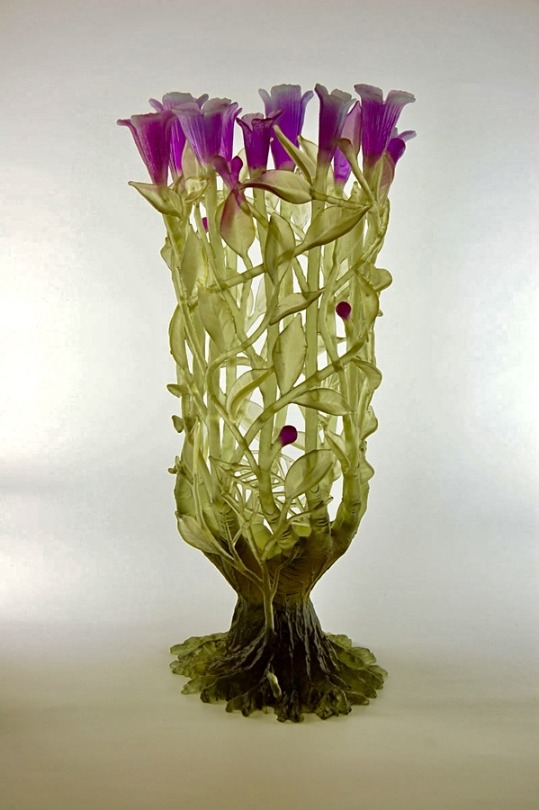
Timatanga 1 (Genesis)
Evelyn Dunstan (New Zealand)
Cast glass
59 notes
·
View notes
Text
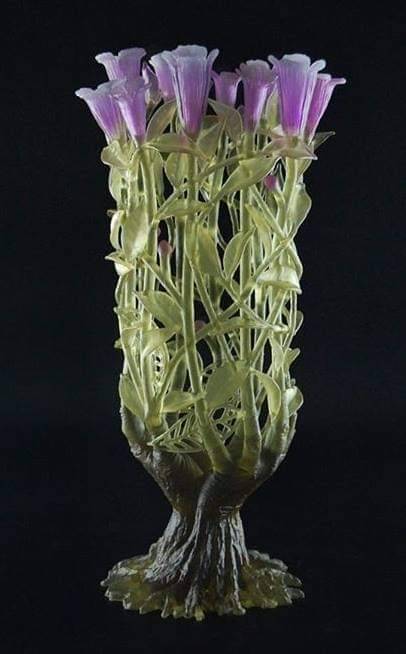
Sculptural cast glass by artist Evelyn Dunstan
43 notes
·
View notes
Text




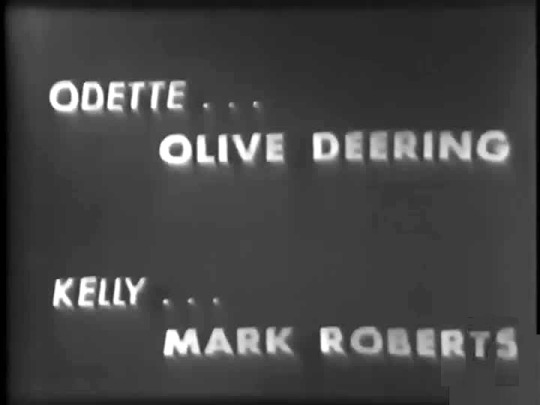
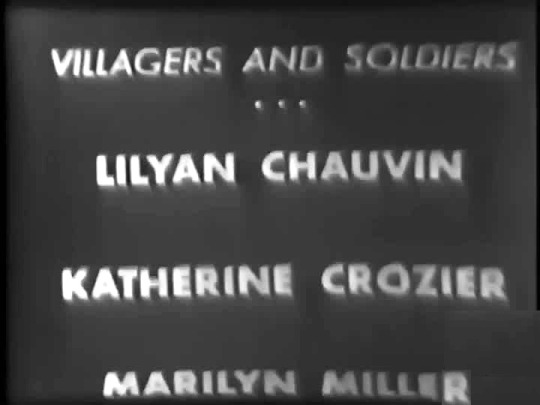
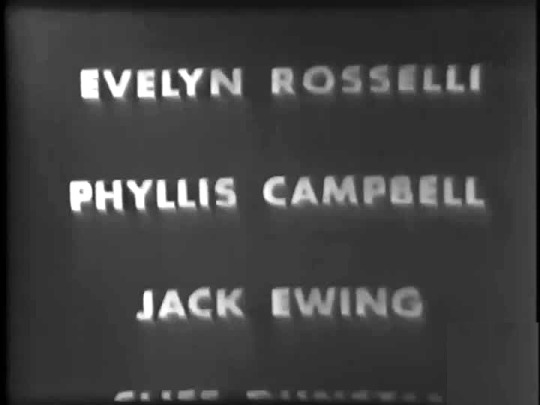


From the Golden Age of Television
Kelly - NBC - January 25, 1950
A presentation of "Kraft Television Theatre" Season 3 Episode 19
Drama
Running Time: 60 minutes
Stars:
Yvonne Rudie as Maman
Manuel Aparicio as Papa
Treva Frazee as Sally Mae
Lawrence Fletcher as Haskins
George Reeves as Sgt. Stivers
E. G. Marshall as Colonel Hodges
Olive Deering as Odette
Mark Roberts as Kelly
Lilyan Chauvin as Villager
Katherine Crozier as Villager
Marily Miller as Villager
Evelyn Rosselli as Villager
Phyllis Campbell as Villager
Jack Ewing as Soldier
Cliff Dunstan as Soldier
Tommy Gillen as Soldier
William Skilling as Soldier
#Kelly#TV#Kraft Television Theatre#1950#Drama#NBC#Mark Roberts#Olive Deering#George Reeves#E. G. Marshall#Lawrence Fletcher
0 notes
Photo


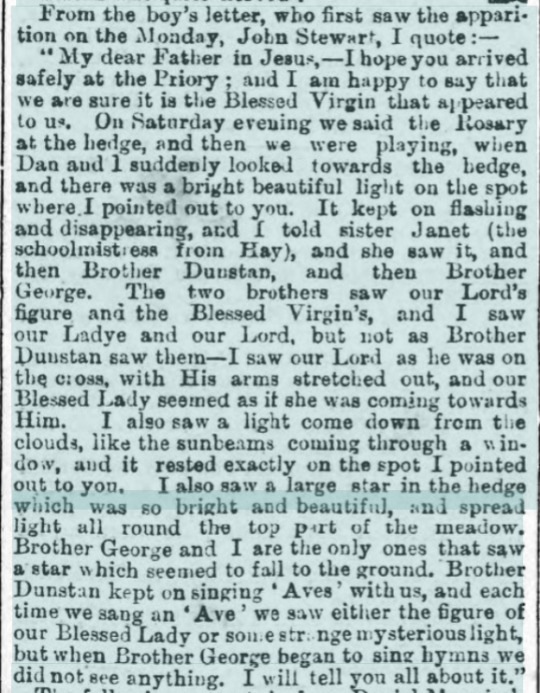



Trawled the papers for the choirboys’ names, etc.
Daniel Maguire, 15 and half. Son of a local farmer - found his birth record and 1901 census which lists him as a married gas stoker visiting his parents in Cwmyoy Upper. I wonder if he went to any of the anniversary services? It would be a nice break from the drudgery of the gasworks, getting fawned over by rich ladies in the midst of a shrine full of gold and jewels.
John Evelyn Stewart, 12 and half. ‘Johnny Stewart’ seems to have been a particular favourite at the monastery, and was present at the first annual commemoration and mentioned in Ignatius’ sermon. I might splurge on Hugh Allen’s book and see if he stayed involved with the order...
Thomas Foord, 11. (John Thomas? Died 1938. If he was local I’d be more confident saying he went by a second name, but I dunno for Brighton.)
Joseph Chalkley, 9.
Other witnesses included Father Ignatius himself, a lay sister named Janet Owens who worked as a schoolmistress in Hay, Brother George, and 20-yr-old Brother Dunstan.
As ever, the Monmouthshire Merlin was completely unimpressed with the whole affair:
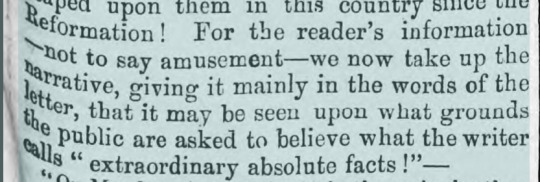
0 notes
Text
𝐣𝐚𝐜𝐤 𝐞𝐥𝐥𝐢𝐬

hollywood actor.
NAME John Raymond Ellis.
STAGE NAME Jack Ellis.
DATE OF BIRTH 5 May 1930.
AGE Early 30s / early 20s.
GENDER Male (he/him).
ORIENTATION Homosexual (closeted).
NATIONALITY American.
OCCUPATION Hollywood actor.
RESIDENCE Los Angeles, California, USA.
HEIGHT 5 feet, 10 inches.
FACE CLAIM Paul Wesley / George Sear.
BIOGRAPHY
Jack landed his first role at the age of seventeen, playing the lead's unnamed teenage son in Behind Closed Doors. He only appeared in a few scenes with a handful of short lines but it was enough to confirm his thirst for an acting career. The following year, he took another small role in Poker Face as a waiter. His first named role came in Playing with Fire. Although the film focused on the unhappy couple, Jack's part as the son caught up in his parents' schemes caught the eye of young women across the country, as well as his future manager, Howard Porter.
Eager to get an idea of Jack's full potential, Howard placed him in a supporting role as a comical sidekick to the lead in Wild Goose Chase. It became clear that he had a great career ahead of him with enough talent to join the ranks of Hollywood's leading men. Following the success of his previous comedies, the emerging heart-throb was given his first leading role as Prince Dunstan in Head Over Heels at the age of twenty-one.
Determined to prove that he had more range than just comedy, Jack insisted upon auditioning for something more serious. His emotional performance in Dead Man Walking was widely praised by critics, earning him two Golden Globe awards for Best Performance by an Actor in a Motion Picture (Drama) and New Star of the Year (Actor). After an adaptation of Romeo and Juliet as Romeo, Jack joined a small ensemble of rising stars in Birds of a Feather. His first experience of filming on location in another country came with Curse of the Pharaoh. In preparation for the role, he worked with Elijah Woodrow to craft an authentic portrayal of a heroic archaeologist.
Following the success of Henry Hawthorne’s film noir Midnight in Harlow, Jack's studio rushed to produce a similar project in colour with their own heart-throb in the lead. Although Jack's performance was generally well-received, the film was criticised as a poor imitation of Hawthorne's work and flopped at the box office. Despite their rivalry, Jack later starred alongside Henry in Two Roasts in the Oven as the competing love interests of Evelyn Shaw, played by none other than Marilyn Monroe. After winning an Academy Award for Best Actor in Deal with the Devil, Jack rejoined forces with his former rival in Break Every Rule.
FILMOGRAPHY
BEHIND CLOSED DOORS (1947) In a small Midwestern town, the residents must work together to hide their dark secret from a nosy newcomer. Drama
POKER FACE (1948) An undercover cop joins a high-stakes poker game to follow the final lead before his case goes cold. Drama
PLAYING WITH FIRE (1949) Divorce proceedings turn sour when both parties are revealed to have hidden assets they weren't planning to share. Comedy
WILD GOOD CHASE (1950) A security breach at the San Diego Zoo causes a mass breakout and a challenging day at work for animal control. Comedy
HEAD OVER HEELS (1951) A charming prince is forced to compete against rival suitors to win the hand of his beloved princess. Romantic comedy
DEAD MAN WALKING (1952) A young soldier and his injured comrade must find a path to safety after they get trapped behind enemy lines. War
ROMEO AND JULIET (1953) An age-old feud between powerful families drives two star-crossed lovers to a devastating end. Shakespearean tragedy
BIRDS OF A FEATHER (1954) A group of tourists band together when their hot air balloon gets blown off course and crashes in the jungle. Comedy
CURSE OF THE PHARAOH (1955) Excavations of an Egyptian tomb are halted by a series of strange events until an wandering archaeologist investigates. Adventure
DAYLIGHT ROBBERY (1956) After an argument with his boss, a bank teller convinces his best friend to help him rob his own bank. Comedy
THESEUS AND THE MINOTAUR (1957) An Athenian prince ventures into the labyrinth to slay the vicious beast within. Adventure
OFF THE RECORD (1958) A homicide detective receives a mysterious letter from the alleged culprit behind his latest case. Drama
JACK OF ALL TRADES (1958) An aspiring actor attempts a variety of day jobs to fund his dreams of moving to Hollywood. Musical comedy
PARDON MY FRENCH (1959) A handsome journalist headed for London gets stranded in Paris following a mix-up at the airport. Romantic comedy
DRESSED TO KILL (1960) An American spy meets his match in a seductive Russian assassin tasked with killing the President. Drama
TWO ROASTS IN THE OVEN (1960) Two neighbours are dating the same girl, clueless that she is running between both their houses on Christmas day. Romantic comedy starring Marilyn Monroe and Henry Hawthorne
DEAL WITH THE DEVIL (1961) The victim of a brutal murder strikes a bargain with the Devil himself to get revenge on his killers. Thriller
BREAK EVERY RULE (1962) A cop is forced to work with the criminal in his custody to avoid the violent gangsters on their tail. Action comedy starring Henry Hawthorne
#🎬 ( dossier • jack ellis )#🎬 ( report • jack ellis )#🎬 ( portrait • jack ellis )#🎬 ( request • jack ellis )
1 note
·
View note
Note
can you give us the names of each region's gym leaders in your au with some explanation about them...
[This content is out of date and no longer canon]
These aren’t fully set in stone so one or two might change in the future, and the details on just how some of them ended up Gym Leaders is still unknown, but here’s a general outline! (Sorry, the World page section on the Gym Leaders isn’t up to date. I’ll get on that.)Kanto Gym LeadersForrest Nibi (Pewter City, Rock-type Specialist)→ Brock gives the Gym to Forrest when he decides to pursue pokémon medicine.Peony Hanada (Cerulean City, Electric-type Specialist)→ Originally, Misty left the Gym to Daisy when she moved to the Orange Islands, but neither of Daisy’s children were interested in being the next Gym leader when she decided to retire. Violet’s daughter, Peony, on the other hand, loved battling and was the best candidate. She breaks the pattern of the previous Cerulean Gym Leaders by being an electric-type specialist like her father, however.Adriana Mitler (Vermillion City, Water-type Specialist)→ With Peony running the Cerulean Gym and Heather up to…. something, Lt. Surge had to look outside his daughters for successors. While I’m still not sure exactly how Adriana ends up running the Gym, she does have a connection to the Lieutenant, being his step-niece.Erika Tamamushi (Celadon City, Grass-type Specialist)Kestrel Sekichiku (Fuschia City, Poison-type Specialist)→ After Janine’s death, Koga comes out of retirement to take over being Gym Leader until his eldest granddaughter comes of age. Kestrel sees being Gym Leader as a chore more than anything and often has to be bribed to be there.Amaryllis Tokiwa (Saffron City, Fairy-type Specialist)→ After Sabrina leaves Kanto to pursue acting, her Gym is in…. someone’s hands (not sure yet). Eventually, Amaryllis ends up inheriting it and becomes Kanto’s first fairy-type Gym Leader..Kaito Mikami (Cinnabar Island, Psychic-type Specialist) → Having originally lived on the island many years ago, when Blaine retires, he asks his granddaughter-in-law’s cousin to take over the Gym, much to Kaito’s surprise. He also helps with the rebuilding efforts for the island.Mimi Aoyama (Viridian City, Multi-type Specialist) → When Gary retires to pursue research, it’s no question who will inherit the Gym, since he’d been training Mimi as his successor for a while. She follows in her husband’s footsteps and doesn’t stick to one type of pokémon, using the same team she traveled with on her pokémon journey.Johto RegionLyra Suzuki (Violet City, Flying-type Specialist)→ While the details are still shaky, Lyra inherits the Gym from Falkner when he moves to Kanto due to his marriage with Janine.Bugsy Hiwada (Azalea Town, Bug-type Specialist)Whitney Kogane (Goldenrod City, Normal-type Specialist) Karen Yoshino (Cherrygrove City, Dark-type Specialist) → Following Pryce’s retirement, Karen left the Elite Four to pursue her dream of opening a Gym in her hometown.Yuusuke Hasumi (Ecruteak City, Ghost-type Specialist)→ He inherits from his father, Morty.Chuck Sawada (Cianwood City, Fighting-type Specialist)Jasmine Asagi (Olivine City, Steel-type Specialist)Draco Fusube (Blackthorn City, Dragon-type Specialist)→ It is a bit of a tradition that the head of the Mikami-Fusube joint clans is the Blackthorn Gym Leader. The head of clan title switches between the two clans each generation, so while Clair was the previous clan head, Lance’s son Draco is the next one. Hoenn RegionRudy Jiang (Rustboro City, Rock-type Specialist) → He inherits from his mother, Roxanne. His twin sister inherits their father’s Gym.Safir Jiang (Dewford Town, Fighting-type Specialist) → She inherits from her father, Brawly. Her twin brother inherits their mothers Gym.Theo Heath (Mauville City, Fairy-type Specialist)→ Details are still unclear but he inherits when Wattson retires, most likely.Caleb Moore (Lavaridge Town, Fire-type Specialist)→ Inherits from his mother, Flannery.Wally Birch-Fang (Petalburg City, Multi-type Specialist) → Norman recommended Wally as his successor, much to Wally’s surprise, since May was busy being a Frontier Brain and Max was more interested in studying under Prof Birch. Winona Lu (Fortree City, Flying-type Specialist) Laelia & Trias Jin (Mossdeep City, Psychic-type Specialists) → They inherit from their father, Tate.Lisia Lu (Sootopolis City, Dragon-type Specialist) → She changes gears from coordinating to battling and takes over the Gym from her uncle Wallace when he becomes Hoenn Champion.Sinnoh RegionRoark Subotin (Oreburgh City, Rock-type Specialist) Gardenia Kobyakova (Eterna City, Grass-type Specialist) Natalia Rebreanu (Veilstone City, Steel-type Specialist)→ Maylene leaves the Gym in her hands when she becomes an Elite Four member.Crasher Wake (Pastoria City, Water-type Specialist)Ceres Severnaya (Hearthome City, Poison-type Specialist)→ Fantina befriended Ceres when the girl took an interest in coordinating while she studyed in Hearthome. When Fantina decided to retire to pursue coordinating full time, she named Ceres as her successor. Challengers have to complete math puzzles to reach her.Maisy Chistyakova (Canalave City, Dark-type Specialist)→ Byron heard about her through fellow Gym Leader Volkner, as Maisy is his niece. She apprenticed under him and he liked her spunk enough to name her his successor. She’s done…. interesting things to the Canalave Gym decor, in usual Maisy fashion.Candice Nakamura (Snowpoint City, Ice-type Specialist) Volkner Tatarintsev (Sunnyshore City, Electric-type Specialist) Unova RegionCheren Rysinov (Aspertia City, Normal-type Specialist) Roxie Helias (Virbank City, Poison-type Specialist) Gabriele Campanula (Castelia City, Ground-type Specialist) → He thought his father’s old job of being a Gym Leader sounded fun, so when Burgh retired to focus on his art, Gabe got himself into the position of next Gym Leader through some dubious methods.Elesa Tatarintseva (Nimbasa City, Electric-type Specialist)Stephan Dunstan (Driftveil City, Fighting-type Specialist) → Details are still unclear on how he inherits from Clay.Jerrie Vidales (Mistralton City, Steel-type Specialist) → Inherits from her mother, Skyla. The Gym still has an airplane theme to it since Jerrie loves planes so much.Marlon Naryshkina (Humilau City, Water-type Specialist) Noah, Micah & Terah Pendragon (Opelucid City, Dragon-type Specialists)→ As Drayden’s eldest grandchildren, the triplets are the natural choice for his (and Iris’) successors, though Iris’ eldest, Cypress, is gunning for the position as well. Kalos RegionViola Leroux (Santalune City, Bug-type Specialist) Grant Leroux (Cyllage City, Rock-type Specialist) Chili von Schwan (Shalour City, Ghost-type Specialist)→ He takes over the Gym when his wife, Korrina, becomes an Elite Four member. His Gym is themed like a magic show, with Chili as the master of illusion and his ghost pokémon as his assistants.Mairin Sycamore (Coumarine City, Grass-type Specialist)→ She inherits from her grandfather, Ramos.Clemont Brassard (Lumiose City, Electric-type Specialist) Sawyer Sheng (Laverre City, Multi-type Specialist) → Details are still unclear but he inherits when Valerie moves to Kanto.Azariah Arcelus (Anistar City, Dark-type Specialist) → I have no idea how he ends up here, but that’s just how it is with Azariah really.Evelyn de Beauvilliers (Snowbelle City, Water-type Specialist)→ I’m also still not sure on the details, but she takes over from Wulfric through some series of events.
4 notes
·
View notes
Text
Looking for descendants of Major-General Aldwell William Taylor (1759-1817)
Aldwell William Taylor,Resident of Malacca,Malaysia from(1798 - 1803).He was born in 1759.Son William Taylor of Yatton, Herefordshire and Elizabeth Aldwell. He nominated a cadet for Madras for the season 1775/1776 HEIC. Deputy Chairman (John Roberts) at the recommendation of Mr Woodhouse, aged 17. Appointed 10th November 1775.He married to Ann Charlotte Metford.He died in 1817.
His issue:-
i)Aldwell Taylor (1796-1828) married to Elizabeth Pearce Taylor.
His issue:-
ai)Elizabeth Taylor(1823-1881).
ii)Peter Alexander Taylor (1797-?)
iii)Robert Taylor (1799-1859).
iv)Dr.John Braithwaite Taylor (1801-1834) married to Martha Anne ?.His issue:-
ai)Aldwell Charles Taylor(1829-1870) married Mary Wastie Millington.
His issue:-
bi) Mary Aldwell Cook Taylor (1852-?) married John Braddock.
Their issue:-
ci) Esther Mary Millicent Braddock(1882-1883).
cii) John Charles Braddock (1883-1884).
ciii)Henry Aldwell Braddock (1886-1962) married 1stly, Mary A Loughlin & 2ndly,Hilda Jackson.
civ) Mary Millington Braddock(1889-1968).
cv) John Warbrick Braddock (1892-1913).
bii) Millicent Wastie Taylor(1853-1932) married Henry Somerset Taylor.
Their issue:-
ci) Florence Mary Taylor (1877-1960) married Harold Dunkerley.
cii) Annie Mildred Taylor (1879-1881).
ciii) Benjamin Banstead Taylor (1881-?) married Emily Ellen Smith.
His issue:-
di) Millicent Wastie Taylor (1906-1968).
biii) Aldwell Somerset Taylor (1856-1933) married Mary Elizabeth ?.
biv)Florence Jane Featherstonehaugh Taylor(1862-?).
bv) Annie Elizabeth Taylor.
v)Charlotte Joyce Taylor(1803-1879).
vi)Lydia Taylor(1806-1854).
vii)Charles Taylor(1807-1876).
viii)William Taylor (1810-?).
ix)Anne Taylor.
x) Henry Somerset Taylor(1812-1848) married Jane Keene.
His issue:-
ai) Emma Jane Taylor.
aii) Henry Somerset Taylor.
aiii) Agnes Ellen Taylor.
xi) Jane Taylor(1814-?) married to John Dungate Featherstonehaugh Parsons.
His issue:-
ai)John Featherstonehaugh Parsons( 1849).
aii)George Metford Parsons(1851).
aiii)Arthur Wilde Parsons(1854-1931)married to Mary Waters Burridge.
His issue:-
bi)Amy Mary Parsons(1884-1949).
bii)Mary Elizabeth Parsons(1886-?).
biii)Arthur Dungate Burridge Parsons(?-1930) married to Claire Martha Oxley.
His issue:-
ci)Marjorie Claire Mary Parsons(1909-1995) married to Edgar Culley.
Their issue:-
di) Barbara M Culley.
dii) Angela M C Culley married Francis Cranch.
Their issue:-
ei) Nicholas A Cranch married Lynette E Spaull.
eii) Christopher N Cranch married Sandra Molton.
His issue:-
fi) David Christopher Cranch.
fii) Matthew William Cranch.
diii)Janet E C Culley married Robert D Gilmour.
Their issue:-
ei) Paul R Gilmour.
eii) David Richard Gilmour.
div) Stephen E C Culley.
dv) Margaret C Culley married David B Milsom.
Their issue:-
ei) Claire Marie Milsom.
eii) Emma Rosemary Milsom.
eiii) Anthony Sinclair Milsom married Melinda Boak.
His issue:-
fi) Joseph Antony Milsom.
fii) Leah Evelyn Milsom.
cii)Dunstan Arthur Aldwell Parsons(1911-1998) married to Hester M L Wilkins.
ciii)Denys Wilde Parsons(1913-1989) married to Eileen Lawrence.
His issue:-
di)Peter Austin Wilde Parsons MacPherson married to Margaret Corfield.
His issue:-
ei)Lawrence Aldwell Wilde Parsons.
eii)Trudi Arwen Wilde Parsons.
aiv)Jane Parsons married to Charles William Weston Knighton Bosanquet.
Their issue:-
bi) Bertie Louis Weston Bosanquet (1887-1955) married Millicent Grace Hall.
Their issue:-
ci) Bernard Louis Knighton Bosanquet (1914-2004) married Irene M Matthews.
His issue:-
di) Jennifer Bernice Bosanquet (1947-2014) married Ian R Watson.
dii) Brenda I Bosanquet married Michael B Coley.
Their issue:-
ei) Louise Elaine Coley.
eii) Nicholas Michael Coley.
eiii) Philip Peter S Coley.
eiv) Richard Philip Coley.
ev) Amy Claire Coley.
diii) David M Bosanquet married 1stly,Angelina A Lord,2ndly to Diane K Braund.
cii) Douglas George Anthony Bosanquet (1914-1943).
ciii) Josephine Margaret Bosanquet (1921-1992) married Harry M Roberts.
Their issue:-
di) Douglas M Roberts.
civ) Stephen John Bosanquet (1925-2005).
cv) Peter Edward Bosanquet (1928-1996).
bii) William Charles Weston Knighton Bosanquet (1891-1950) married Elizabeth McGregor.
His issue:-
ci) Aldwell William Taylor Bosanquet (1918-1943).
biii) Lucy Alice Margaret Bosanquet (1892-1975).
biv) Kathleen Gladys Bosanquet (1894).
Please contact me at - [email protected]

1 note
·
View note
Text
British Library digitised image from page 6 of "St. Dunstan's Clock, a story of 1666"
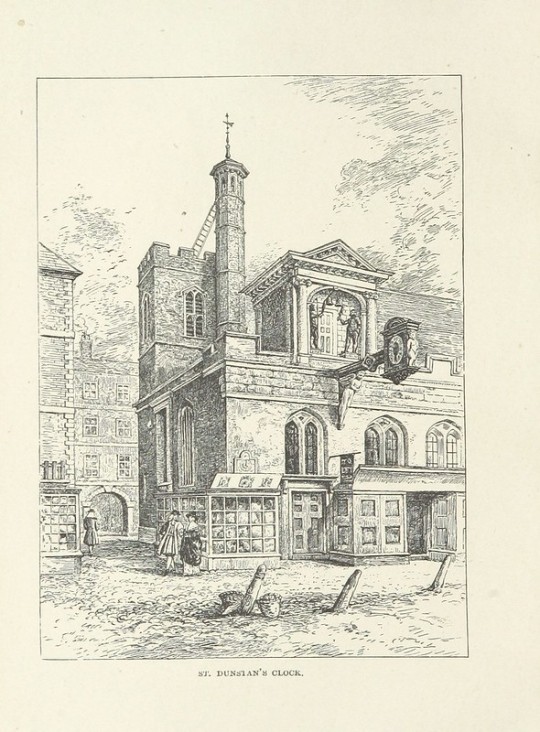
Image taken from:
Title: "St. Dunstan's Clock, a story of 1666"
Author(s): Ward, E., pseudonym [i.e. Evelyn Everett Green] [person]
British Library shelfmark: "Digital Store 012641.l.6"
Page: 6 (scanned page number - not necessarily the actual page number in the publication)
Place of publication: London (England)
Date of publication: 1893
Publisher: Seeley
Type of resource: Monograph
Language(s): English
Physical description: 326 pages (8°)
Explore this item in the British Library’s catalogue:
003849309 (physical copy) and 014831659 (digitised copy)
(numbers are British Library identifiers)
Other links related to this image:
- View this image as a scanned publication on the British Library’s online viewer (you can download the image, selected pages or the whole book)
- Order a higher quality scanned version of this image from the British Library
Other links related to this publication:
- View all the illustrations found in this publication
- View all the illustrations in publications from the same year (1893)
- Download the Optical Character Recognised (OCR) derived text for this publication as JavaScript Object Notation (JSON)
- Explore and experiment with the British Library’s digital collections
The British Library community is able to flourish online thanks to freely available resources such as this.
You can help support our mission to continue making our collection accessible to everyone, for research, inspiration and enjoyment, by donating on the British Library supporter webpage here.
Thank you for supporting the British Library.
from BLPromptBot https://ift.tt/3hCR1Rw
0 notes
Text

FLOWERS GLASS VASE
#flowers#glass#flores#vidrio#vase#jarron#evelyn dunstan#corning museum of glass#corning#new york#nueva york#united states#estados unidos#america
84 notes
·
View notes
Text
Susanna Centlivre 1667?-1723
The Gamester: A Comedy. As it is Acted at the New Theatre In Lincolns-Inn Fields By Her Majesty’s Servants. The Prologue Spoke by Mr. Betterton. Written by N. Rowe, Esq; The Third Edition.
London: Printed for J. Knapton, in St. Paul’s Church-Yard, E. Curll at the Dial and the Bible, R. Gosling at the Mitre and Crown, both against St. Dunstan’s — Church in Fleetstreet, and A. Bettesworth on London-Bridge, 1714 $1,950
Duodecimo 6.3 x 3.75 inches A4, B-D12, E2. 75 pages. Third edition. This copy has been recently rebound in full parchment over boards.
Susanna Centlivre was born Susanna Freeman and also known professionally as Susanna Carroll, was an English poet, actress, and
“the most successful female playwright of the eighteenth century”
“A sad lot were all these early feminine intruders into the field of letters, —Aphra Behn, Mrs. Manley, Mrs. Pilkington, and the rest. Mrs. Centlivre was the best of them. Almost the first of her sex to adopt literature as a calling, she may well be regarded as an unconscious reformer, the leader of a forlorn hope against that literary fortress which was so long defended by the cruel sneers of its masculine garrison. She fell upon the glacis. But over her body the Amazons have marched on to victory.” (H. A. Huntington, “Mrs. Centlivre,” Atlantic Monthly, 1882, vol. 49, page 764.
“[Centlivre’s] plays have a provoking spirit and volatile salt in them, which still preserves them, from decay. Congreve is said to have been jealous of their success at the time, and that it was one cause which drove him in disgust from the stage. If so, it was without any good reason, for these plays have great and intrinsic merit in them, which entitled them to their popularity, and besides, their merit was of a kind entirely different from his own.” (William Hazlitt, 1818, “Lectures on the English Comic Writers,” Lecture viii.
The original source for the plot line was Jean Francois Regnard’s “Le Joueur.” The prologue was written by Nicholas Rowe (1674-1718). The dedication signed: S. Trotter, i.e. Susanna Centlivre.
See By Elisabeth J Heard Experimentation on the English Stage, 1695-1708: Routledge, Sep 30, 2015
ESTC T26857; NCBEL II, 781.
147F Titus Carus Lucretius 95-52
B.C. T.Lucretius Carus His Six Books Of Epicurean Philosophy, Done into English Verse, with Notes. The Third Edition. Demetri, Teq; Tigelli Discipulorum inter jubeo plorare Cathedras; i, Puer, atque meo citus hœc subscribe libello.
London: Printed for Thomas Sawbridge at the Three Flewer-de-luces in little Britain, and Anthony Stephens Bookseller near the Theatre in Oxford, 1683 $2800
Octavo, 7 1/4 x 4 3/4 inches (π1), A4, b-e4, f2, A-E4, (a)-(g)4, h2. Third edition.
This copy is bound in original full calf its front joint is cracked at the foot, up to the second band, the rear joint is beginning to crack at either end, but it is completely sound and still quite appealing. The leaves are very clean and fresh, with deep impressions of the type.
This translation was prepared by Thomas Creech (1659-1700). The prefatory material contains commendatory poems by John Evelyn, Nahum Tate, Thomas Otway, and Aphra Behn {Her long poem (7 pages) To the unknown Daphnis appears here for the first time} among others, many of which were added after the first edition. Creech’s Lucretius first appeared in 1682, with certain portions of the text, notably those in the fourth book about the nature of love, left untranslated.
Both Pope and Evelyn praised the translation, and Dibdin says that the editor’s erudition, research, and correctness in this excellent and scarce work are acknowledged by every critic. The influence of Lucretius can be seen in Pope’s ‘Essay on Man.’ Lucretius was also favorite reading of Shelley, Wordsworth, and Tennyson.
“Creech’s translation of Lucretius vied in popularity with Dryden’s Virgil and Pope’s Homer. The son of one of his friends is reported to have said that the translation was made in Creech’s daily walk round the parks in Oxford in sets of fifty lines, which he would afterwards write down in his chamber and correct at leisure. […] When Dryden published his translations from Theocritus, Lucretius, and Horace, he disclaimed in the preface any intention of robbing Creech ‘of any part of that commendation which he has so justly acquired,’ and referred to his predecessor’s ‘excellent annotations, which I have often reprinted in the last century, and was included in the edition of the British poets which was issued by Anderson.” (DNB) Wing L-3448 Gordon: Lucretius 311c; O’Donnell (Behn) # BB11 ; Keynes (Evelyn) p.258; T.C. II: 6; see Grolier W-P #237 for the first edition.273F
453F John Dryden 1631-1700
Lucretius a poem against the fear of death. With an ode in memory of the accomplish’d young lady Mrs. Ann Killigrew, excellent in the two sister arts of poetry and painting.
London: H. Hills, 1709. $980
Octavo 6 1/2 X 4 1/4 inches Hills’s pirate edition .A8
First edition in this form Price from imprint: Price One Penny. This copy is bound in full reversed calf.
Killigrew died of smallpox on June 16, 1685, when she was only 25 years old so the question has frequently been raised: is Killigrew so deserving of such an immortalizing Ode by Dryden? Had he even read her poetry to properly determine her skills? Some say Dryden defended all poets as teachers of moral truths, and therefore Killigrew, despite her lack of experience, deserved his praise. However, evidence shows that she might not have been ready to see some of her work published, such as the unfinished poem “Alexandreis,” about Alexander the Great. At the end of the poem, she expresses the feeling that the task was too great for her to take on and she would try to finish it at another time. Then, there is the question of the last three poems that were found among her papers. They seem to be in her handwriting, which is why Killigrew’s father added them to her book. The poems are about the despair the author has for another woman, and could possibly be autobiographical if they are in fact by Killigrew. Some of her other poems are about failed friendships, possibly with Katherine Philips or Anne Finch, so this assumption may have some validity. Foxon, D458
English Short Title Catalog, ESTCT76294.
852F Thomas Halyburton Edited by Mrs. Janet Halyburton. 1674-1712
Memoirs of the life of the Reverend Mr. Thomas Halyburton. Professor of Divinity in the University of St. Andrews; digested into four parts, whereof the first three were written with his own hand some years before his death, and the fourth is collected from his diary by another hand; to which is annex’d some account of his dying words by those who were witnesses to his death.
Edinburgh : printed by the heirs and successors of Andrew Anderson, 1715 1150 Octavo 4 6 1/4 in [8], A O8, P2. Second edition Bound in early 19th century full leather with gilt trim and maroon leather title label.Contemporary ownership inscription of Archibald Craw on verso of title page and dated 1729. This book is Edited by Halburton’s wife Janet Watson and Dedicated to Henretta Campbell.
Halyburton has been regarded as one of the most distinguished Scottish theologians. Hugh Martin described Halyburton and Cunningham as “the two greatest theologians that Scotland has ever produced”. John Duncan regarded him as “a minor John Owen” and classed his Memoirs with Augustine’s Confessions and Bunyan’s Grace Abounding. Obviously much indebted to the English Puritan, John Owen, Halyburton is more plain and popular in style. Among those beyond Scotland who benefited from and highly recommended the Memoirs and other published works of Halyburton are such significant (and varied) figures as George Whitefield and John Wesley, John Newton and Isaac Watts, and Archibald Alexander, first principal of the Princeton Theological Seminary.
Thomas Halyburton was born on December 25th 1674, the son of George Halyburton, minister of Aberdalgie and Dupplin in Perthshire until he was ejected from his charge in 1662 for his adherence to the Covenanted religion of Scotland. In 1676 George Halyburton was denounced by the Privy Council for keeping conventicles and was effectively silenced and in 1682 he died. Mrs. Halyburton and her two surviving children — her married daughter Janet and her son Thomas — fled to Rotterdam, to escape the persecution of the Covenanters. In the changed circumstances brought about by the Revolution, Thomas Halyburton was ordained and inducted to the ministry at Ceres in Fife in May of 1700. In April 1710 he became Professor of Divinity in the New College (St Mary’s), St Andrews. A struggle with ill health characterised most of his ministry and on September 23rd 1712 he died, leaving his wife with six surviving children. The impact of Halyburton’s sermons and theological writings is largely explained by the description given of him in the Preface to one edition of his The Great Concern of Salvation : “one that had the contents of the book written upon his own heart before he preached them to his people and was a living and lively witness and example of the great and grave truths now exhibited to public view”. Even his most technical and controversial work, Natural Religion Insufficient and Revealed Necessary to Man’s Happiness in his Present State, a refutation of Deism [which taught that all that needs to be known of God can be discovered by human reason in the light of nature without special revelation], found much of its impetus in his own spiritual struggle with the atheism of his carnal mind strengthened by Deistic reasonings and in his pastoral concern for others who might be subject to similar conflicts. His other major work, An Essay concerning the Nature of Faith; or, The Ground upon which Faith assents to the Scriptures, is an explanation of the apostle’s determination to preach in such a way “that your faith should not stand in the wisdom of men, but in the power of God” (1 Corinthians 2: 5). The English philosopher John Locke only accepted aspects of the Christian faith which were “above reason” on the basis of authority verified by reason. For him “reason must be our last judge and guide in everything”. Against Locke Halyburton contends that a God-given faith “looks only at the Lord’s authority…it leans only on the testimony of God, approving itself such to the souls of believers by its own glorious power, whereby, without borrowing help from any other signs, it evidences itself to be the Lord’s word, with a light so strong as carries the soul into an assent”. ESTC T148531, shows only one copy in the US
122F Mary de la Rivière Manley 1663-1724
Secret memoirs and manners of several persons of quality of both sexes. From the New Atalantis, an island in the Mediteranean.
London: Printed for John Morphew, and J. Woodward, 1709 $4500
Octavo 7 1/2 X4 3/4 inches I. A4, B-Q8, R4. Second edition. This jewel of a book is expertly bound in antique style full paneled calf with a gilt spine. It is a lovely copy indeed.
The most important of the scandal chronicles of the early eighteenth century, a form made popular and practiced with considerable success by Mrs. Manley and Eliza Haywood.
Mrs. Manley was important in her day not only as a novelist, but as a Tory propagandist.
Her fiction “exhibited her taste for intrigue, and impudently slandered many persons of note, especially those of Whiggish proclivities.” – D.N.B. “Mrs. Manley’s scandalous ‘revelations’ appealed immediately to the prurient curiosity of her first audience ; but they continued to be read because they succeeded in providing certain satisfactions fundamental to fiction itself. In other words, the scandal novel or ‘chronicle’ of Mrs. Manley and Mrs. Haywood was a successful form, a tested commercial pattern, because it presented an opportunity for its readers to participate vicariously in an erotically exciting and glittering fantasy world of aristocratic corruption and promiscuity.” – Richetti, Popular Fiction before Richardson.
The story concerns the return to earth of the goddess of justice, Astrea, to gather information about private and public behavior on the island of Atalantis. Delarivier Manley drew on her own experiences as well as on an obsessive observation of her milieu to produce this fast-paced narrative of political and erotic intrigue. New Atalantis (1709) is an early and influential example of satirical political writing by a woman. It was suppressed on the grounds of its scandalous nature and Manley (1663-1724) was arrested and tried. Astrea [Justice] descends on the island of Atalantis, meets her mother Virtue, who tries to escape this world of »Interest« in which even the lovers have deserted her. Both visit Angela [London]. Lady Intelligence comments on all stories of interest. p.107: the sequel of »Histories« turns into the old type of satire with numerous scandals just being mentioned (e.g. short remarks on visitors of a horse race or coaches in the Prado [Hyde-Park]). The stories are leveled against leading Whig politicians – they seduce and ruin women. Yet detailed analysis of situations and considerations on actions which could be taken by potential victims. Even the weakest female victims get their chances to win (and gain decent marriages) the more desperate we are about strategic mistakes and a loss of virtue which prevents the heroines from taking the necessary steps. The stories have been praised for their »warmth« and breathtaking turns.
Manley was taken into custody nine days after the publication of the second volume of Secret Memories and Manners of several Persons of Quality of Both Sexes, from the New Atalantis, an island in the Mediterranean on 29 October 1709. Manley apparently surrendered herself after a secretary John Morphew and John Woodward and printer John Barber had been detained. Four days later the latter were discharged, but Manley remained in custody until 5 November when she was released on bail. After several continuations of the case, she was tried and discharged on 13 February 1710. Rivella provides the only account of the case itself in which Manley claims she defended herself on grounds that her information came by ‘inspiration’ and rebuked her judges for bringing ‘w woman to her trial for writing a few amorous trifles’ (pp. 110-11). This and the first volume which appeared in May 1709 were Romans a clef with separately printed keys. Each offered a succession of narratives of seduction and betrayal by notorious Whig grandees to Astrea, an allegorical figure of justice, by largely female narrators, including an allegorical figure of Intelligence and a midwife. In Rivella, Manley claims that her trial led her to conclude that ‘politics is not the business of a woman’ (p. 112) and that thereafter she turned exclusively to stories of love.
Delarivier Manley was in her day as well-known and potent a political satirist as her friend and co-editor Jonathan Swift. A fervent Tory, Manley skilfully interweaves sexual and political allegory in the tradition of the roman a clef in an acerbic vilification of her Whig opponents. The book’s publication in 1709 – fittingly the year of the collapse of the Whig ministry – caused a scandal which led to the arrest of the author, publisher and printer.
The book exposed the relationship of Queen Anne and one of her advisers, Sarah Churchill. Along with this, Manley’s piece examined the idea of female intimacy and its implications. The implications of female intimacy are important to Manley because of the many rumours of the influence that Churchill held over Queen Anne. ESTC T075114; McBurney 45a; Morgan 459.
684G John Sheffield, Duke of Buckingham WITH Wharton, Anne 1648-1720 and Anne Finch (1661-1720)
A Collection of Poems: Viz. The Temple of Death: By the Marquis of Normanby. An Epistle to the Earl of Dorset: By Charles Montague, Lord Halifax. The Duel of the Stags: By Sir Robert Howard. With Several Original Poems, Never before Printed, By The E. of Roscommon. The E. of Rochester. The E. Orrery. Sir Charles Sedley. } { Sir George Etherege. Mr. Granville. Mr. Stepney. Mr. Dryden, &c.
London:Ralph Smith 1702 $2250
Octavo 7 1/2 X 4 1/2 inches A4, B-U8, W4, X-Z8; Aa-Ee8, Ff4. Second edition. Bound in contemporary panelled calf, raised bands, rebackd, morocco label. a VG copy, being internally very crisp and clean . A revised and enlarged edition of A Collection of Poems by Several Hands, published in 1693, this itself being an expansion of the first edition of 1672.
In this miscellany are seven Poems by Anne Wharton .
Anne Wharton, née Lee (born 20 July 1659 at Ditchley Park, Oxfordshire, died 29 October 1685 at Adderbury, Oxfordshire) She was the posthumous younger daughter of Sir Henry Lee, and a member of a wealthy family. Her mother died not long after her birth. She and her sister Eleanor were brought up at Adderbury House, where they lived with the mistress, mother and grandmother of its owner, the poet and libertine John Wilmot, 2nd Earl of Rochester, who was Anne Wharton’s uncle. In 1673 she married Thomas Wharton (1648–1715). She paid visits to Paris for her health in 1678 and 1680, as she suffered from eye troubles and convulsions, possibly linked to syphilis. Her husband soon neglected her and they had no children. After her death, Anne Wharton’s brother-in-law, Goodwin Wharton claimed in his autobiography that he had had an affair with her, and that she had had three other affairs – with Charles Mordaunt, 3rd Earl of Peterborough before her marriage (he bribed a servant to let him into the girl’s room at night) and with “Jack Howe” (probably the Whig politician John Grubham Howe, 1657–1722) in the 1680s – as well as being “lain with long by her uncle, my Lord Rochester.” Her letters to her husband from Paris seem devoted, but when visited her again in Paris, to obtain her signature on some documents to do with her £8000 estate, her ardour seems to have cooled. Anne Wharton’s death, in her sister Eleanor’s house at Adderbury in 1685, was very painful. The poet Robert Gould in an eclogue to the memory of Eleanor, who died in 1691, observes that hers was peaceful one by comparison:
“Think how her sister, dear ‘Urania’ [i. e. Anne], fell,
When ev’ry Arte’ry, Fibre, Nerve and Vein
Were by Convulsions torn, and fill’d with Pain…”[4]
A modern critical edition of 34 known works by Anne Wharton was published in 1997
Greer, Germaine; Hastings, Susan, eds. (1997). The Surviving Works of Anne Wharton. Saffron Walden: Stump Cross Books. p. not cited. ISBN 1-872029-25-6.
but at least eleven other poems have been discovered in manuscript since then.[9] Her “Elegy on the Earl of Rochester” appears in the New Oxford Book of Seventeenth-Century Verse (1991)
A Song
How hardly I concealed my Tears?
How oft did I complain?
When many tedious Days, my Fears
Told me I Loved in vain.
But now my Joys as wild are grown,
And hard to be concealed:
Sorrow may make a silent Moan,
But Joy will be revealed.
I tell it to the Bleating Flocks,
To every Stream and Tree,
And Bless the Hollow Murmuring Rocks
For Echoing back to me.
Thus you may see with how much Joy
We Want, we Wish, Believe;
‘Tis hard such Passion to Destroy,
But easy to Deceive.
Greer & Hastings, The Surviving Works of Anne Wharton, 1, 3, 4, 8, 9, 10(a), 20. 182.
Also in this miscellany arms a Poem to Katherine Philips by Roscommon ” an Ode to Orinda”
and an Anonymous “Prologue to Oroonoko”(by A Behn)
and Ann Finch’s (1661-1720) The SPLEEN
“The physical disability and psychological perturbations of melancholy were well known to one of the foremost women poets of the eighteenth century, Anne Finch, Countess of Winchilsea. As a victim of the malady, her description of its effects were firsthand and specific, with none of the generalities born of vague knowledge […] Lady Winchilsea begins her best-known poem on the subject, ‘The Spleen’ (1701), by describing the malady as ‘Proteus to abus’d Mankind.’ No one can find the cause of the affliction, she writes, nor can one ‘fix thee to remain in one continued Shape.’ By speaking of melancholy in these terms, Lady Winchilsea is echoing the sentiments of contemporary physicians who frequently compared the disease to Proteus, the shape-changing god of the sea, because its manifestations were always changing, continuously shifting from one part of the body to another, while constantly mimicking other diseases. Underlying its various forms, however, was the notion expounded by the Countess and contemporary physicians alike that melancholy was a mixed malady of body and mind, causing the sufferer physical pain and the psychological disorders of anxiety, grief, and fear without cause.” (Melancholy in Anne Finch and Elizabeth Carter, by John F. Sena) “‘Spleen’ is for Finch both triumph and failure. It is only once the spleen has affected the speaker that she describes her poetry as fallen, decayed failure. But, at the same time, the spleen allows her to assert that she does not wish to be a genteel woman artist, one who makes safe, insipid domestic arts or uncritically draws the monarch’s ‘undistinguish’d Face.’ ‘The Spleen’ returns to the overlap of political religious, and emotional failure in its closing lines with a description of Richard Lower, a physician to Charles II who supported the Whigs in the Popish Plot, sinking beneath the weight of the spleen.” (English Women’s Poetry, 1649-1714, by Carol Barash)
Also in this wonderful book are among other poems …
The miscellany’s title-poem is a translation by the Earl of Mulgrave of Philippe Habert’s elegy ‘Le Temple de la Mort,’ in spite of the scorn expressed in the publisher’s preface for the French nation, and ‘the Servile way of following their Modes’. An essay on poetry, by J. Sheffield, 1st duke of Buckingham.–Horace: of the art of poetry, by Horatius Flaccus.–An essay on translated verse, by the earl of Roscommon.–Coopers hill, by J. Denham.–The duel of the stags, by R. Howard.–The temple of death, by P. Habert.–Macflecknoe, by J. Dryden; with Spencer’s ghost, by J. Oldham–Lecretius.–The plague of Ahtens (!) by T. Sprat.–The spleen, by A.K. Finch, contess of Winchilsea.–A letter from Italy, by J. Addison together with The mourning muse of Alexis, by W. Congreve.–The Kit-Cats, by R. Blackmore.–The campaign, by J. Addison.–Pastorals, by A. Philips.–Faction display’d, by W. Shippen.–Baucis and Philemon, by J. Swift; as also An ode upon, by W. Dillon, 4th earl of Roscommon.–Muscipula, by E. Holdsworth. Case 151 (f); Greer & Hastings, The Surviving Works of Anne Wharton, 1, 3, 4, 8, 9, 10(a), 20. 182. Prinz (Rochester) VII,21.*
767G Katherine Philips 1631-1664
Letters from Orinda to Poliarchus
London: printed by W.B. for Bernard Lintott, 1705 $4,500
Octavo 6 3/4 X 3 3/4 inches A-R8 First edition This copy is bound in original full calf with a coat of arms stamped in gold on the boards,recently rebacked with new spine label. This is a collection of 48 ( XLVIII) actual letters written by Philips to her patron Sir Charles Cotterell published several decades after her death, there is quit a bit of discussion of the literary culture of the seventh century in Britain. Including insite to Philips writing and reading habits. she often mentions books she is reading and plays which she is working on.
Philips was interested in the epistolary form, she founded the Society of Friendship in 1651 until 1661 was a semi-literary correspondence circle made up of mostly women, though men were also involved. The membership of this group, however, is somewhat questionable, because the authors took on pseudonyms from Classical literature (for example Katherine took on the name Orinda, in which the other members added on the accolade “Matchless.”) It is interesting to see the relations between the female members of the circle, especially Anne Owen, who is known in Philips’s poems as Lucasia. Half of Katherine’s poetry is dedicated to this woman. Anne and Katherine seem to have been lovers in an emotional, if not in a physical, sense for about ten years. Also significant as correspondents and lovers were Mary Awbrey (Rosania) and Elizabeth Boyle (Celimena). Elizabeth’s relationship with Katherine, however, was cut short by Philips’ death in 1664.
In “The Sapphic-Platonics of Katherine Philips, 1632-1664” Harriette Andreadis
Source:Signs: Journal of Women in Culture and Society 15, no. 1 (autumn 1989): 34-60.
Ms Andreadis, in this essay nicely gives a view of Orinda’s live (and Loves) in relation to her writing by using excerpts from her poems andThese letters;
Early Feminist writing… Susanna Centlivre 1667?-1723 The Gamester: A Comedy. As it is Acted at the New Theatre In Lincolns-Inn Fields By Her Majesty’s Servants.
0 notes
Photo
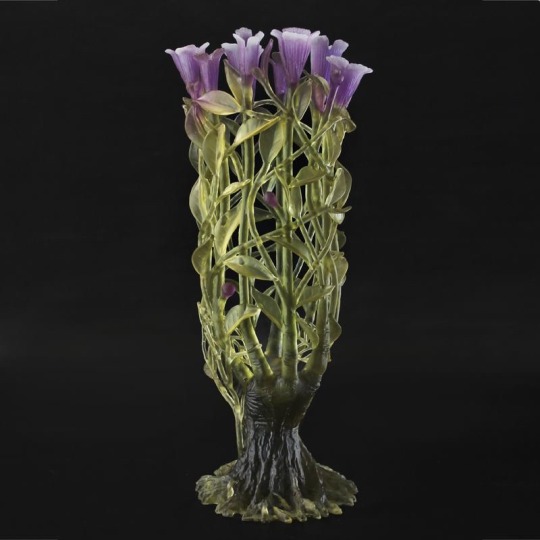
Designed by Evelyn Dunstan
891 notes
·
View notes
Photo

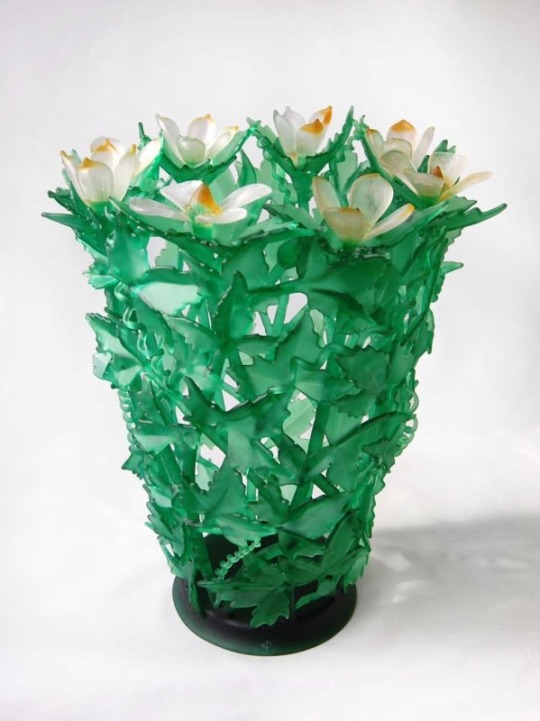


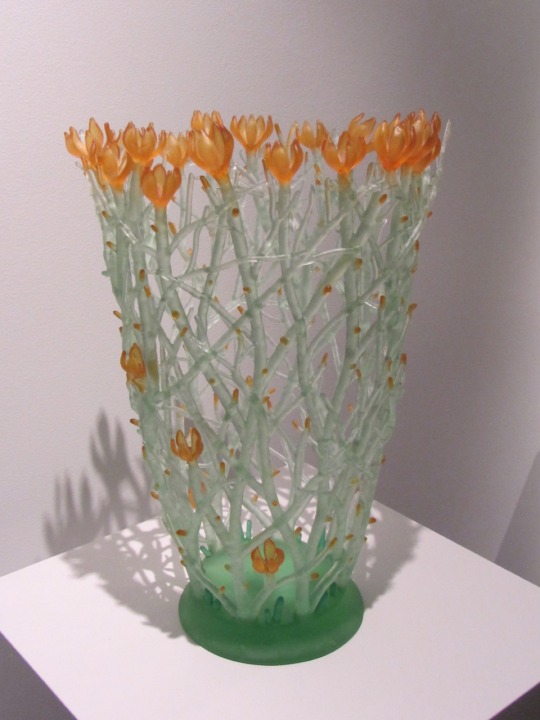
Evelyn Dunstan
23 notes
·
View notes


